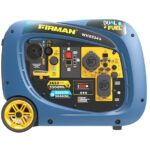Tires are a critical component of any vehicle, and understanding their different parts is essential for every car owner. Knowing the anatomy of a tire can help you make informed decisions about maintenance, replacement, and ensure your safety on the road. While often overlooked, each part of a tire plays a vital role in its overall performance and durability. Let’s delve into the key components that make up a tire on your car.
Key Components of a Tire Explained
A modern car tire is a complex piece of engineering, composed of several distinct parts working together. These parts can be broadly categorized into structural elements and surface features. Let’s explore each of these in detail to understand their function and contribution to the tire’s performance.
Tread: The Contact Point
The tread is the most visible part of the tire, and it’s the portion that makes contact with the road surface. It’s designed with grooves, sipes, and blocks to provide grip in various conditions, channeling water away to prevent hydroplaning, and offering traction on dry surfaces. The tread pattern varies significantly depending on the tire type, such as all-season, winter, or performance tires, each designed for specific driving needs. Regularly checking your tire tread depth is crucial for safety, as worn treads reduce grip and increase braking distances, especially in wet conditions.
Alt text: Close-up of a tire tread pattern showing grooves and sipes designed for water channeling and grip.
Sidewall: Information and Protection
The sidewall is the side portion of the tire, extending from the tread to the bead. It provides lateral stability to the tire and protects the inner plies from damage. Crucially, the sidewall contains a wealth of information about the tire, including the tire size, load index, speed rating, manufacturing date (DOT code), and brand information. Understanding these markings is vital when replacing tires to ensure you choose the correct type and size for your vehicle. The sidewall also plays a role in ride comfort and handling, influencing how the tire flexes and responds to steering inputs.
Shoulder: Bridging the Gap
The shoulder is the area where the tread and sidewall meet. This part of the tire plays a crucial role in cornering and handling. The design of the shoulder influences the transition from straight-line driving to cornering, affecting grip and responsiveness during turns. The shoulder area is also subject to wear, especially during aggressive cornering, and can provide insights into driving habits and tire inflation issues if wear is uneven.
Bead: Ensuring an Airtight Seal
The bead is the inner edge of the tire that sits on the wheel rim. It is constructed of strong steel cables encased in rubber and is designed to create an airtight seal between the tire and the wheel. The bead is essential for maintaining tire pressure and preventing air leakage. Proper installation and maintenance of the bead area are critical to ensure a secure and safe connection between the tire and the wheel.
Alt text: Detail of tire sidewall markings showing tire size, speed rating, and load index for informed tire selection.
Belts: Strength and Stability Under the Tread
Located between the plies and the tread, belts are layers of material, often steel, that encircle the tire. Belts provide strength and rigidity to the tread area, enhancing puncture resistance and helping the tire maintain its shape under load and at high speeds. They also contribute to even tread wear and improve handling and fuel efficiency by reducing rolling resistance.
Plies: The Tire’s Internal Structure
Plies are layers of fabric, typically nylon, polyester, or rayon cords, that make up the tire’s casing. These layers are embedded in rubber and run radially from bead to bead, forming the structural foundation of the tire. Plies provide flexibility, strength, and resistance to internal pressure. The number and material of plies influence the tire’s load-carrying capacity, ride comfort, and durability.
Inner Liner: Maintaining Tire Pressure
For modern tubeless tires, the inner liner is a layer of synthetic rubber inside the tire that is impermeable to air. This layer replaces the need for an inner tube, maintaining air pressure directly within the tire itself. The inner liner prevents air from escaping through the tire’s components and is crucial for maintaining proper tire inflation and pressure retention over time.
Conclusion: A System of Interconnected Parts
Understanding the parts of a tire on your car highlights the complexity and engineering involved in their construction. Each component plays a vital role in the tire’s performance, safety, and longevity. Regular tire inspections, proper inflation, and timely replacements are essential to ensure your vehicle operates safely and efficiently. Knowing these parts empowers you to better understand tire maintenance and make informed choices for your vehicle’s tire needs.
